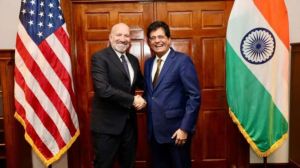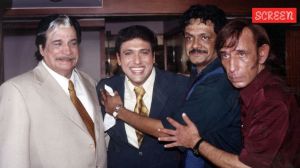Unholy nexus
Sikh history is replete with instances of the mighty, including Maharaja Ranjit Singh, doing penance at the Golden Temple. It did not affe...

Sikh history is replete with instances of the mighty, including Maharaja Ranjit Singh, doing penance at the Golden Temple. It did not affect their personal prestige or standing in the community. It only denoted that the spiritual powers were superior to the temporal powers. Thus the controversy over the hukumnama issued by Akal Takht jathedar Puran Singh to SGPC chief Bibi Jagir Kaur is unusual.
Far from presenting herself before the Jathedar for penance, she has defied it, provoking an avoidable, ugly clash between their supporters. It did not show them in a good light. As things stand, Bibi Jagir Kaur remains `excommunicated’ from the Panth raising questions about her competence to preside over the SGPC, which has to pass the annual budget later this month.
The tussle has acquired a new dimension with the Jathedar `excommunicating’ the jathedars of the Takht Kesgarh Sahib and Takht Damdama Sahib, the head priest of Akal Takht and two members of the SGPC. It is, perhaps, the first time that the Akal Takht Jathedar has `excommunicated’ the jathedars of two other Takhts.
They have questioned the manner in which the hukumnama was issued against them. All this is a pointer to the seriousness of the politico-religious crisis facing the community. What is disquieting is the silence of the one person who should have genuine reasons to worry about the goings-on. He is Chief Minister Parkash Singh Badal.
Come to think of it, both the Akal Takht Jathedar and the SGPC chief are Badal’s own nominees. This makes the situation particularly difficult for him to handle. If Badal sides with Bibi Jagir Kaur, it will raise eyebrows because it was at his instance that Puran Singh’s predecessor, Ranjit Singh, was removed last year. On the other hand, if he supports the hukumnama-happy Jathedar, it will send wrong signals, for Bibi Jagir Kaur’s ascension marked a new chapter in Sikh religious history.
Since both of them belong to his own camp, their fight is bound to reflect on Badal’s leadership. Though the chief minister is now, politically, in a better position, as proved in the recent byelection in the state, he can ill afford to ignore the goings-on.
It is true that Badal’s traditional rival, G.S. Tohra, has been vanquished and the chief minister enjoys a clear majority in the SGPC. But that does not mean that the forces that Tohra used to represent are down and out. The possibility of their regrouping under anyone opposed to Badal cannot be ruled out. To say that it would be ideal for the chief minister to insulate himself from religious pressures is not to understand Sikh politics at all.
As it is, every Shiromani Akali Dal leader would like to have a say in the running of the SGPC, which has a budget of Rs 100 crore. As long as this nexus continues, any demand that the religious and political leaderships of the Panth should have no truck with each other is pointless. The community had to pay a heavy price for mixing politics and religion during the decade of militancy. Nobody believes that a similar situation will again emerge in the state. But to make sure that it never emerges, there is need to separate the spiritual from the temporal. A tall order, given the peculiar intertwining of politics and religion in Punjab.





- 01
- 02
- 03
- 04
- 05


























